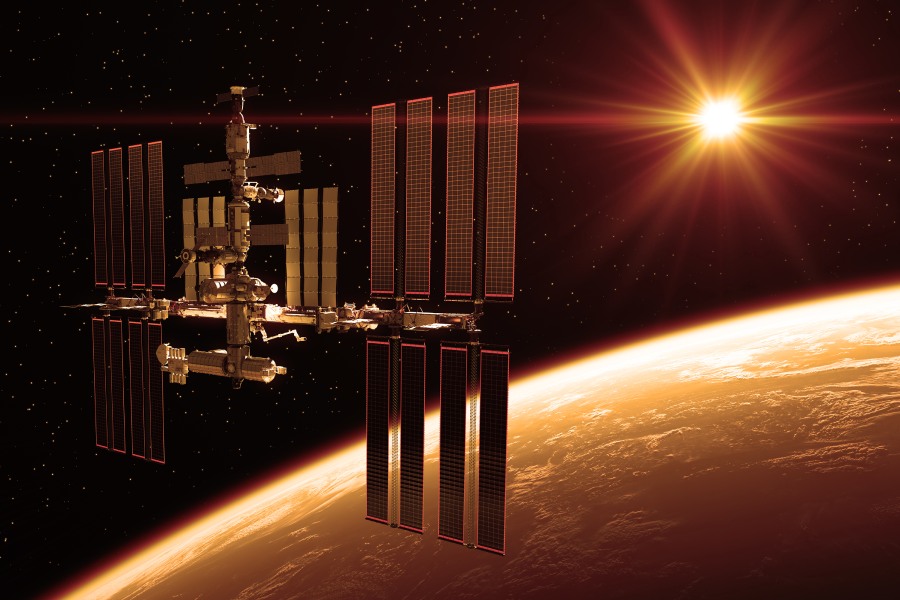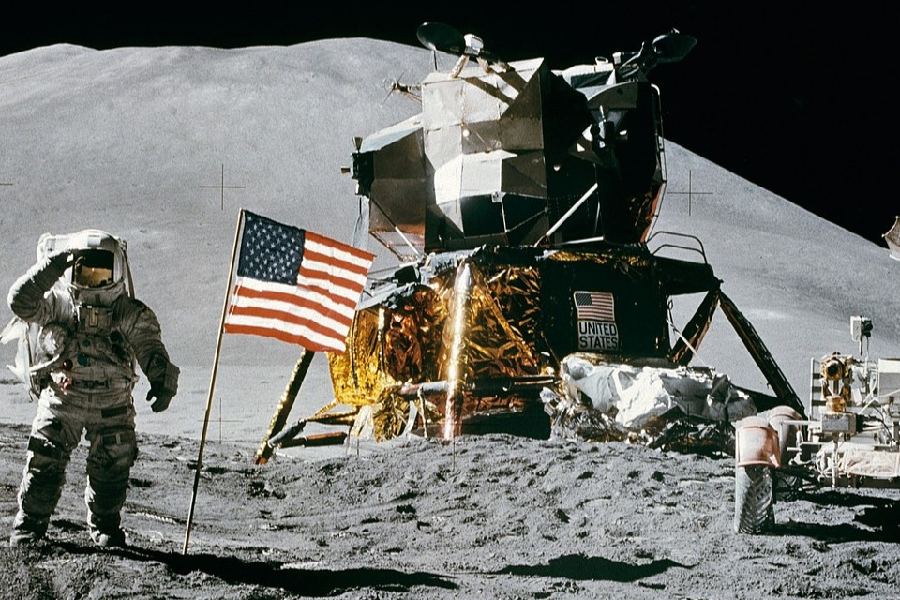The Space Race, a pivotal epoch within the Cold War tension between the United States and the Soviet Union, is a testament to the intense rivalry that characterized this era. Born out of political and ideological rivalry, the competition in space exploration became a symbolic battleground. But why is the Space Race important?
This intense rivalry fueled scientific advancements and profoundly impacted global politics, shaping alliances and influencing the geopolitical landscape. In understanding this inquiry on the significance of orbital aspirations, we’ll navigate escalating international feats fueling space race momentum.
Join us as we delve into the competitive spirit that defined the Space Race and explore its far-reaching impact on the world stage during this critical chapter in history.

Why Is the Space Race Important?
The Space Race holds significance for several reasons. First, it spurred immense technological innovation, driving the creation of new technologies with applications extending beyond space exploration. This progress has led to advancements in various fields, influencing everyday life on Earth.
Second, the Space Race carried geopolitical importance during the Cold War era. It symbolized national prestige and power, with the United States and the Soviet Union (USSR) vying for superiority through achievements in space exploration.
Moreover, the competition fostered international collaboration. Despite political tensions, space missions required cooperation between nations, contributing to diplomatic ties and promoting unity in scientific pursuits.
The Space Race also played a crucial role in scientific discovery, expanding our understanding of the cosmos and Earth. It opened up economic opportunities by creating new industries and jobs related to space exploration and technology.
Beyond practical benefits, the Space Race was a source of inspiration and education. It ignited curiosity and interest in science and exploration, motivating future generations to pursue careers in these fields. Overall, the Space Race had a multifaceted impact on human progress, influencing technology, geopolitics, international relations, science, and education.
Achievements during the Space Race
The Space Race led to groundbreaking accomplishments that revealed the cosmos to be within reach. These pioneering achievements include the launch of the first:
- Artificial satellite, Sputnik
- Human spaceflight by Yuri Gagarin
- Spacewalk by Alexei Leonov
- Lunar flyby with Apollo 8
- Historic Apollo 11 Moon landing – the first human setting foot on another world.
This monumental period illuminated the Solar System’s mysteries for the first time. It also established foundational spacefaring capabilities and infrastructure that continue to enable and support our ambitions in space today.
National prestige and power
The Space Race brought immense national pride. Successes like the Moon landing galvanized American identity. It created a profound sense of purpose during the technological and social strides of the 1960s.
The pioneering essence of exploring new frontiers resonated with cultural themes. It forged national unity through a shared mission. Space achievements became symbols of possibility. While fueled by nationalistic rivalries, the triumphs of the Space Race proved uplifting for all humanity.
Cold War context
The Space Race started during the Cold War. It revealed the differences in ideas between opposing systems. When Sputnik launched, it made people think the Soviet Union was leading in science.
However, the Moon landing helped America regain an advantage. These accomplishments weren’t just about space but also about gaining respect and influence.
Even though the Cold War pushed these efforts, they expanded our understanding of space. These early missions showed that space exploration could unite people to pursue knowledge, crossing political divides.
Economic growth and innovation
The Space Race cultivated substantial investment in research and technology. NASA’s budget peaked at over 4% of federal spending in the 1960s. These funds both advanced capabilities while powering economic growth.
Space programs created specialized jobs needing highly skilled workforces possessing technical and scientific expertise. This cultivation of human capital drove progress across electronics, computing, telecommunications and other intersecting fields.
Accelerating innovation
Space exploration technologies have led to useful applications in various industries, such as healthcare and microelectronics. These spin-offs have created new markets and improved lives through breakthroughs in material science.
In recent times, private spaceflight has picked up speed due to reduced launch costs. This could lead to the growth of space tourism as a significant economic sector. With space becoming more accessible, commercial opportunities are expanding in this multibillion-dollar frontier.
Apart from their initial purposes, space technologies have sparked commercial spin-offs and new industries. These developments bring advancements to healthcare, computing, communications, and material science, ultimately enhancing our lives.

Why Is the Space Race Important: Major Events in the Space Race
The Space Race started after World War Two when Cold War tensions arose. It gained momentum when Russia launched Sputnik in 1957, marking the first artificial satellite in space.
This achievement highlighted Soviet space superiority, prompting the United States to make changes in education and research. NASA was also established to concentrate on space exploration.
During the 1960s, nations competed fiercely in space achievements. In 1961, Russia’s Gagarin became the first person in space, while eight years later, America’s moon landing marked the peak of the race. This friendly competition resulted in both triumphs and tragedies, revealing the mysteries of the cosmos.
Kennedy’s vision
President Kennedy hugely expanded America’s commitment to space exploration during his tenure. He recognized space achievements as vital to competing with the Soviets. Major increases in NASA’s budget helped fund an aggressive Moon landing program.
In 1962, Kennedy delivered his influential “We Choose to Go to the Moon“ speech at Rice University. It framed ambitious space goals as upholding the national character rather than taking easy options. This soaring rhetoric aligned US interests with the mystique of space’s frontier.
Kennedy galvanized the nation to commit itself to the goal of reaching the Moon. His Rice University speech provided a bold vision for American space exploration. It captured the public imagination and helped secure popular support for the immense investments required.
Cuban missile crisis
The 1962 crisis emerged from Soviet missile installations in Cuba near US borders. As tensions peaked between the superpowers, prospects of nuclear war seemed possible.
So, Kennedy may have felt pressured by the perceived Soviet progress in the Americas, leading him to make more ambitious space commitments. The rivalry between the two nations spanned both Earth and space, and the Space Race atmosphere increased the political risk of any setbacks.
Kennedy’s challenge to reaching for the Moon
Momentous goal
In 1961, Kennedy set a goal for NASA: land humans on the Moon within a decade. Many doubted its feasibility, but it sparked intense efforts in America and pushed the Soviets to excel in space achievements.
The ambitious goal attracted funds and inspired innovation, leading to the successful Moon landing in 1969. Kennedy’s vision stretched our potential, challenging us to aim higher and look beyond the limits.
Apollo takes flight
In response to Kennedy’s 1961 challenge, NASA started the Apollo program, aiming to send astronauts to the Moon by 1970. This bold effort rallied the nation’s tech and engineering expertise toward space goals, setting the stage for a manned lunar mission.
Throughout the 1960s, NASA carried out over a dozen Apollo missions to test spacecraft and astronaut readiness. They confirmed orbital docking, covered the lunar distance, and validated landing techniques. As the 1960s began, Apollo 11 turned the Moon mission from a dream into reality.
Soviet achievements
The Soviet space program predated NASA with groundbreaking firsts. In 1957, Sputnik’s launch inaugurated the Space Age. As mentioned, the cosmonaut Yuri Gagarin became the first human in space in 1961, raising the Soviet Union’s international prestige.
These initial exploits drove American efforts to catch up. Meanwhile, the Soviet Vostok and Soyuz programs achieved additional milestones like the first dual crewed flight, spacewalk and robotic lunar soil sample returns – even as the race’s focal point shifted towards the Moon.
The Soviets’ early successes forced the US to play catch-up in spaceflight capabilities. Their technological feats, especially Sputnik and Gagarin’s historic flight, were sources of national pride. The Soviet program demonstrated remarkable ingenuity despite having fewer resources than the US.
US response to Vostok program successes
The Soviet Union’s early successes in spaceflight with their Vostok program caused concern and alarm in the US. When Yuri Gagarin became the first human in space in 1961, it was considered an embarrassment for the US.
It increased fears that the US was falling behind scientifically. There were worries that if the Soviets could launch a man into orbit, they could also deploy missiles against America.
In response, the US rapidly expanded funding for NASA and space research. The Mercury and Gemini programs were accelerated to adapt to the Soviets’ capabilities. Beating the Soviets to the Moon became a national priority.
Though sparked by rivalry, the Space Race drove an unprecedented burst of innovation. The rapid progress made in just over a decade illustrates the heights that can be reached when vision and resources are mobilized toward a common goal.
U.S.-Soviet Cooperation With the Apollo-Soyuz Test Project
The Apollo-Soyuz Test Project in 1975 was a big deal for the US and the Soviet Union working together in space during a time called détente. They docked their spacecraft together while orbiting Earth, showing they could cooperate. It was a strong message that these powerful countries could work peacefully even during the Cold War.
This mission helped build trust and paved the way for future joint projects. It was a big part of the broader easing of tensions between the US and the USSR in the 1970s. It proved that even with different beliefs on Earth, they could still cooperate up in space.
Transitioning to global cooperation
The Space Race started with competition but led to global cooperation and innovation. As tensions lessened, the US and USSR worked together on projects such as the Apollo-Soyuz mission. This collaboration extended to ventures like the International Space Station.
The technologies developed during the Space Race now have uses in civil and commercial applications worldwide. This intense rivalry ultimately paved the way for space exploration that benefits humanity.
The Space Race sped up our shift from separate national programs to a united global space effort. It was only later that we fully grasped the positive impact of the Space Race on human civilization.
Conclusion
The Space Race spanned over a decade of intense competition between the United States and the Soviet Union. It demonstrated the possibilities of human spaceflight while acting as a surrogate for deeper ideological rivalries. So, why is the Space Race important?
The race to the Moon embodied Cold War tensions, with each achievement representing national capability and resolve. In retrospect, the Space Race accelerated technological development and left a legacy of accomplishment that inspires space exploration to this day.
As discussed, the Space Race was impactful because it pushed boundaries, fed ambitions, and proved the impossible within reach. This is why the mid-20th century era of space milestones retains such significance. Understanding this period provides insight into why the Space Race remains so important decades later.
